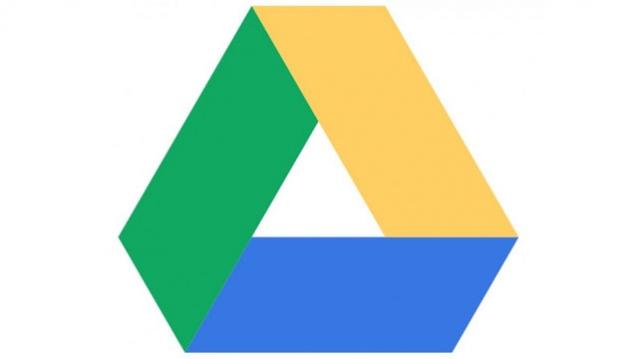My Review of a Nextbit Robin
An honest review of the Nextbit Robin and my experience with Android 6.01. And a warning: I just picked up an Apple iPhone 7 and will never go back to Android phones.
Around March 2016, I picked up a new phone. The Nextbit Robin. I'd never owned an Android phone before but the Robin had some pretty compelling specs as compared to the iPhone 6s:
2ghz hexa-core Snapdragon 808
2680mAh fixed battery
3gb RAM and 32gb storage
13mp/5mp back/front camera
WiFi, GPS, Bluetooth, NFC, 4G
Plus, hey: the form factor and color options were pretty cool and retro. I got to admit that it's a pretty phone.
Robin started as a Kickstarter campaign and some of the overall concepts of the phone intrigued me, primarily the idea of a phone entirely focused on cloud-based storage model. Part of the phone's offerings in a 100gb cloud-based storage that the o/s sync's against to store things like photos, videos, and music that wouldn't be stored on the physical unit.
With local device encryption and Android Mobile Device Management Policies implemented through Google Apps, I felt I could make the phone reasonably secure.
Like I said: I'd never owned an Android phone before and I was interested in the phone from a technical-curiosity perspective, but I must admit: I recently purchased an Apple iPhone 7. It arrives tomorrow and I intend never to go back to Android. I had really thought Android was on-par now with iOS, but after my experience with it, I now feel that just isn't the case.
I didn't have the best experience. In using it for six months:
The Robin's o/s performance and hardware seemed to degrade.
Battery life seemed to be eroded very quickly and it retains less than a five hour charge now - I have to charge it twice a day;
I literally can't make a telephone call from the unit and have people hear me unless I turn on the speaker phone - even after reboots - I can't even figure out what happened there;
Voice recognition is far inferior to Apple - it's like I have to fight with the narration to get my ideas down on the device;
Application integration in Android seems tedious - so many permissions and allowances just to get anything accomplished;
Vendor support for Android and Android Pay seemed unrealistically non-existent - my bank didn't support it as they supported iOS' ApplePay;
Android updates took over 45 minutes to be applied to the unit; its cloud-based sync offered no superior functionality to Apple's sync services;
I'd lose text messages - stuff never arrived to me or my messages never left the device;
The chassis flexed and bent too easily, creating a warped line on the phone so that it didn't sit evenly with a table within a month.
Through my experience with it, I had to spend an inordinate amount of time troubleshooting the phone, restarting it, resetting its image, fiddling with settings. I spent a lot of time fighting with this phone. Likely, my problems were more related to Android than Nextbit's product itself. Inasmuch, I couldn't recommend this phone (perhaps any Android phone) to anyone who simply wants a working, secure appliance that takes minimal effort to work. If they want a hobby or to play around with a phone, this wasn't a bad unit - it was fairly fast - but it was so distracting that it compromised my ability to get work done; missing text messages was bad but the inability to complete a phone call was the last straw.
Perhaps you had a different experience with the Nextbit - I hope so. I really liked some of the ideas presented in the Kickstarter. However, I just can't say I'm an Android person, and my Nextbit experience was enough to solidify my ideas and satiate my curiosity: I'm going back to Apple.
Google Apps for Work - Vancouver, WA Partner
Google Apps for Work is a great solution for small business! Mickler & Associates, Inc. of Vancouver, WA and Portland, OR is uniquely qualified to help your company move into the Google cloud!
Google Apps for Work offers small businesses an opportunity to use enterprise-class email at fractions of the cost.
Imagine: all of your company's email, contacts, calendars, and files, securely accessible from anywhere and on any device! And Google Apps for Work comes with the best anti-spam and anti-malware filtering available.
Google Apps has four compelling metrics for the small business owner.
1. Its cost is extremely low as compared to a solution that you’d manage on your own. It scales to your needs, where you can add and remove users/cost at your own discretion.
2. Every Google Apps user gets 30gb of email and file storage in Google Apps – an extraordinary amount of space for the cost.
3. Google Apps enjoys “six-nines” up-time: Google is online .999999% of the time during the year. That means that the service goes down for, at most, two hours out of every year. That’s better than “five-nines” up-time which is an enterprise computing standard. Google Apps is extraordinarily reliable.
4. Control. We can control the security and the user experience with Google Apps from one centralized point, protecting your employees, your customer, and your company’s intellectual property.
A Google Apps for Work Reseller and Partner since 2008, Mickler & Associates, Inc. is uniquely qualified to assist small and large companies moving to Google Apps for Work. We've helped hundreds of companies and more than 2,200 users all across the US and Canada.
Want to know more? Just ask! Heck, we don't charge anyone for the privilege to learn how we can help their business. Thanks again for your time.
How to Copy Google Drive Files to Another User Outside of the Google Apps Domain
Having a problem moving Google Drive files to another Google Apps user outside of the Google Apps Domain? Here's a couple of work-arounds.
If you're moving or transferring files from one user to another within a Google Apps domain, that can be accomplished using a transfer tool within the Admin Console.
And the bad news: if you're moving or transferring files from one user to another outside a Google Apps domain, there is not a native tool for that function.
However, there is a work-around. Here's how it works.
Let's pretend you have user@domain1 and user@domain2.
You want to move (change ownership) of files from user@domain1 to user@domain2.
In the user@domain1's Drive, create a folder called INBOUND and share it to user@domain2.
In the user@domain1's Drive, copy or move all of the content you want to move into the INBOUND share.
In the user@domain2's Drive, find the INBOUND share and make a copy the file.
The copied file is now owned by user@domain2.
Unshare the INBOUND folder in user@domain1's Drive.
Now, all of this sounds pretty cool until you notice two things:
1. Google Drive doesn't have a native way to copy a Folder. What an oversight?
2. Google Drive appends a text string of "Copy of" in front of the file. Very obnoxious.
Low, another work-around.
In user@domain2's Drive, create a new Spreadsheet.
Add an Add On called copy folder. You'll need to search for it and grant it permissions.
In the spreadsheet, select the Add On copy folder.
The UI is pretty simple: select the INBOUND folder and process.
The script will recurse through the INBOUND folder and make a duplicate of it; it will also recurse the subdirectory structure and re-create subdirectories.
The copied INBOUND folder will now be owned by user@domain2.
You can now unshare the INBOUND folder.
A couple of notes on the copy folder add-on.
It's not perfect. Expect it to crash on long recursive processes.
I think the "breaking" of recursive processes may be due to ownership rights of objects within the folder being copied - but I'm uncertain at this point.
Instead, try to break down your copying process into batches - handling sub-directories separately.
One day, maybe ... soon? ... Google may feel nice enough to create a means of copying a Folder within the web user interface. Then, one day, by the Grace of Google, we could assign ownership rights outside of a Domain to another Google Apps user. But until then, I offer these work-arounds.
R








